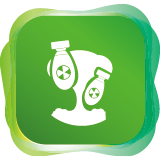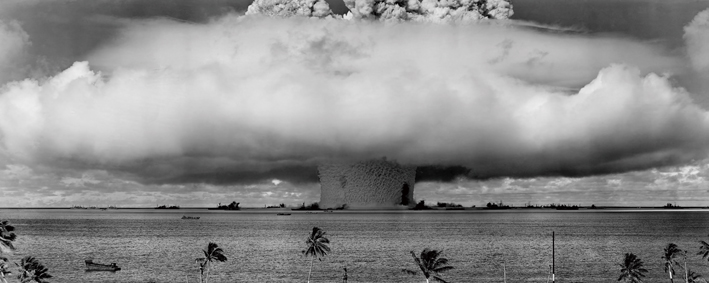 |
CCGL9033 Global IssuesWeapons of Mass Destruction: Science, Proliferation and TerrorismThis course is under the thematic cluster(s) of:
|
Course Description
Weapons of mass destruction (WMD), i.e. nuclear, chemical and biological, comprise the most destructive and lethal weapons developed by humankind. Given that these weapons pose a serious threat to the survivability of humanity, a fundamental understanding of WMD development, deterrent potential, reduction and more recently, risks posed by proliferation networks and terrorist groups is of particular importance. This course further deals with the historical development of WMD systems and will be accompanied by a discussion of the underlying principles involved in WMD technology and the environmental legacy of nuclear weapons testing. We will draw students’ attention to the strategic, political and ethical aspects of WMD programmes, the current spread of WMD technology and non-proliferation treaties that aim to regulate and reduce WMD proliferation. We will also take a close look at the evolution of WMD proliferation networks, the emergence of WMD terrorism and the consequences of terror-networks acquiring WMD materials. Finally, we will end this course with an important question: can the world move towards the complete disarmament of all WMD and would such a goal be desirable?

Course Learning Outcomes
On completing the course, students will be able to:
- Describe and explain the technological development of nuclear, chemical and biological WMD and their application in conflicts.
- Identify and evaluate the relationship between WMD producers and proliferators and how globalization has impacted these relationships.
- Evaluate key components of recent nuclear test ban treatises and describe what type of technology is used for compliance monitoring.
- Discuss how proliferation networks of nuclear, chemical and biological WMD differ and how non-state actors seek to acquire WMD.
- Identify and analyze potential worst-case WMD attack scenarios and develop appropriate response strategies.
Offer Semester and Day of Teaching
Second semester (Wed)
Study Load
| Activities | Number of hours |
| Lectures | 24 |
| Tutorials | 12 |
| Reading / Self-study | 40 |
| Assessment: Essay / Report writing | 15 |
| Assessment: Presentation (incl preparation) | 15 |
| Assessment: In-class test (incl preparation) | 15 |
| Total: | 121 |
Assessment: 100% coursework
| Assessment Tasks | Weighting |
| Essay | 25 |
| Group multimedia presentation | 25 |
| Group debate | 20 |
| In-class test | 30 |
Required Reading
Selections from:
- Allison, G. (1997, October). Nuclear dangers: Fear increases of terrorists getting hands on “loose” warheads as security slips. The Boston Globe.
- Bethe, H. A. (1950). The hydrogen bomb. Bulletin of the Atomic Scientists, 6, 99.
- Blix, H. (May 27, 2010). Can we move toward a nuclear weapon-free world? Hertog Global Strategy Initiative Nuclear Summer Seminar. Columbia University, New York. [Video]
- Brittain, D. (2007). Hong Kong’s response to a chemical, biological, radiological or nuclear attack [Whitepaper]. Hong Kong: Hong Kong Hospital Authority.
- Graham, B., Talent, J., et al. (2008). World at risk: The Report of the Commission on the Prevention of Weapons of Mass Destruction Proliferation and Terrorism. New York: Vintage Books.
- Hafez, M. M., & Rasmussen, M. J. (2012). Terrorist innovations in weapons of mass effect, Phase II (Workshop Report, U.S. Naval Postgraduate School).
- Kistiakovsky, G. (1978). The folly of the neutron bomb. Bulletin of the Atomic Scientists, 34, 27.
- Meshik, A. P. (2005). The workings of an ancient nuclear reactor. Scientific American.
- Moltz, J. C., Orlov, V. A., & Stulberg, A. N. (Eds.). (2004). Preventing nuclear meltdown: Managing decentralization of Russia’s nuclear complex. Aldershot, UK; Burlington, VT: Ashgate.
- Nelson, R. W. (2003). Nuclear bunker busters, mini-nukes, and the U.S. nuclear stockpile. Physics Today, 56, 32.
- Sagan, C. (1983). Nuclear winter: Global consequences of multiple nuclear explosions. Science, 222, 1283.
- Schwartz, S. I. (1998). Atomic audit: The costs and consequences of U.S. nuclear weapons since 1940. Washington, DC: Brookings Institution Press.
- Thompson, S. L., & Schneider, S. H. (1986). Nuclear winter reappraised. Foreign Affairs, 62, 981.
- Tucker, J., & Walker, P. (2009, April). Getting chemical weapons destruction back on track. Bulletin of the Atomic Scientists. From http://www.thebulletin.org
- Zhao, L.F., Xie, X.B., & Wang, W. M. (2012). Yield estimation of the 25 May 2009 North Korea nuclear explosion. Bulletin of the Seismological Society of America, 102, 2.
Course Co-ordinator and Teacher(s)
| Course Co-ordinator | Contact |
| Dr K.H. Lemke Department of Earth Sciences, Faculty of Science |
Tel: 2241 5474 Email: kono@hku.hk |
| Teacher(s) | Contact |
| Dr K.H. Lemke Department of Earth Sciences, Faculty of Science |
Tel: 2241 5474 Email: kono@hku.hk |

